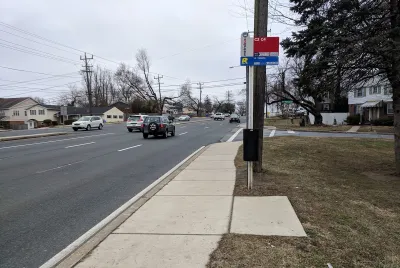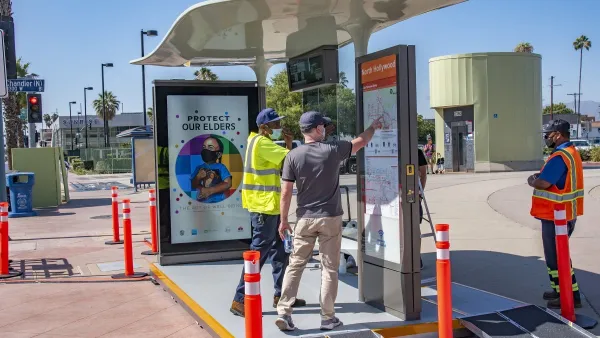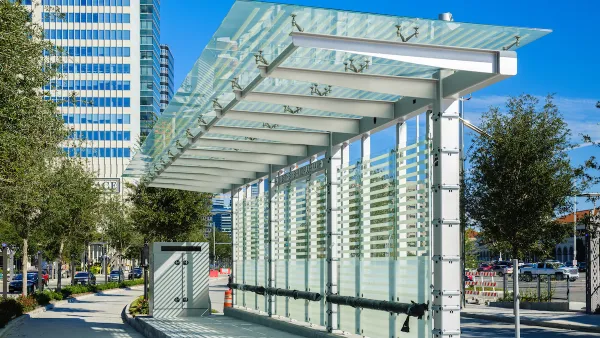Areas most exposed to extreme heat also tend to lack bus shelters and benches at bus stops.

Writing in Greater Greater Washington, Madeleine Bartin outlines the results of her research on how resources are allocated around Washington, D.C.’s transit stops, finding that some of the neighborhoods that experience the hottest temperatures thanks to the urban heat island effect are also least well-equipped with shelters and benches at bus stops.
According to Bartin’s research, “Metro stations with the lowest average percentages of 14-20% of stops having shelters were located entirely in Northeast and Southeast DC. The lines most covered were predominantly located in Northwest DC.”
People who aren’t affected by the design choices may not register them as exclusionary.
In D.C., the Washington Metropolitan Area Transit Authority (WMATA) awards a franchise agreement to Clear Channel Outdoor to build and maintain bus shelters in exchange for advertising space. Because the company is allowed to consider “the advertising market potential” in their site selection, the company is incentivized to see the shelters as revenue boosters rather than as public amenities.
Bartin calls this an issue of spatial justice — “a field of study that acknowledges the impact of urban design and access to public resources.” As Bartin explains, “features of cities that we often take for granted—like shade, heat, and bus stops—are not uniform, or innate, but shaped by human interaction.” The decisions made by policymakers and planners impact who has access to public resources.
FULL STORY: Some of the most sweltering DC neighborhoods lack bus shelters. Cooler spots have them

National Parks Layoffs Will Cause Communities to Lose Billions
Thousands of essential park workers were laid off this week, just before the busy spring break season.

Retro-silient?: America’s First “Eco-burb,” The Woodlands Turns 50
A master-planned community north of Houston offers lessons on green infrastructure and resilient design, but falls short of its founder’s lofty affordability and walkability goals.

Delivering for America Plan Will Downgrade Mail Service in at Least 49.5 Percent of Zip Codes
Republican and Democrat lawmakers criticize the plan for its disproportionate negative impact on rural communities.

Test News Post 1
This is a summary

Test News Headline 46
Test for the image on the front page.

Balancing Bombs and Butterflies: How the National Guard Protects a Rare Species
The National Guard at Fort Indiantown Gap uses GIS technology and land management strategies to balance military training with conservation efforts, ensuring the survival of the rare eastern regal fritillary butterfly.
Urban Design for Planners 1: Software Tools
This six-course series explores essential urban design concepts using open source software and equips planners with the tools they need to participate fully in the urban design process.
Planning for Universal Design
Learn the tools for implementing Universal Design in planning regulations.
EMC Planning Group, Inc.
Planetizen
Planetizen
Mpact (formerly Rail~Volution)
Great Falls Development Authority, Inc.
HUDs Office of Policy Development and Research
NYU Wagner Graduate School of Public Service





























